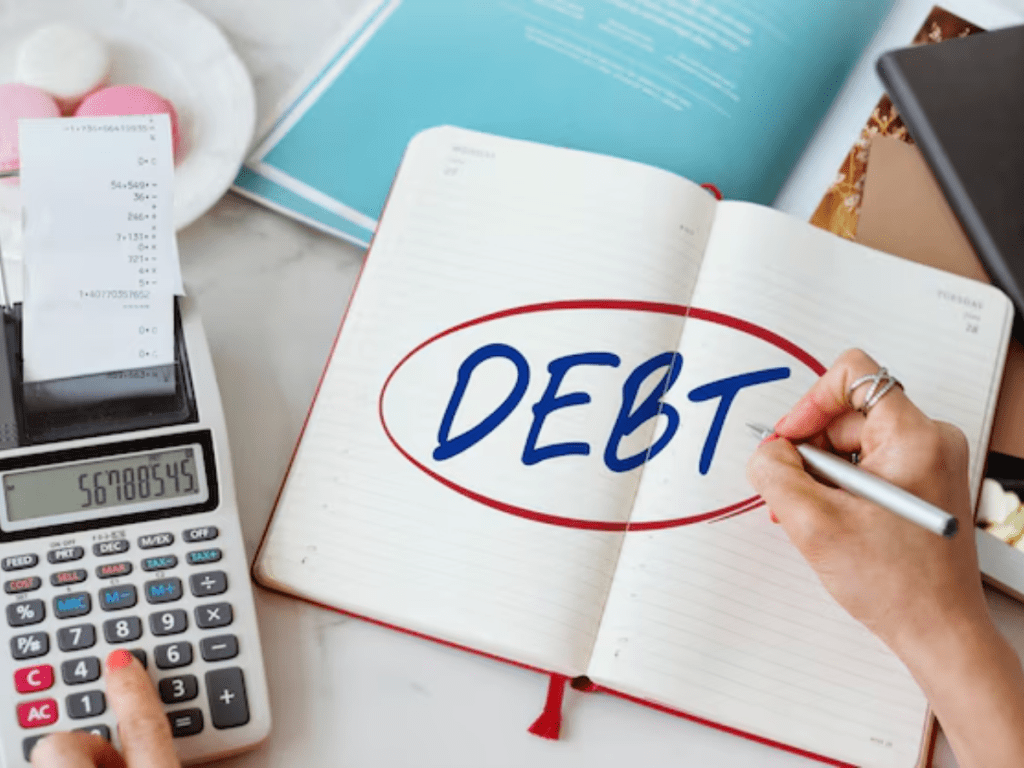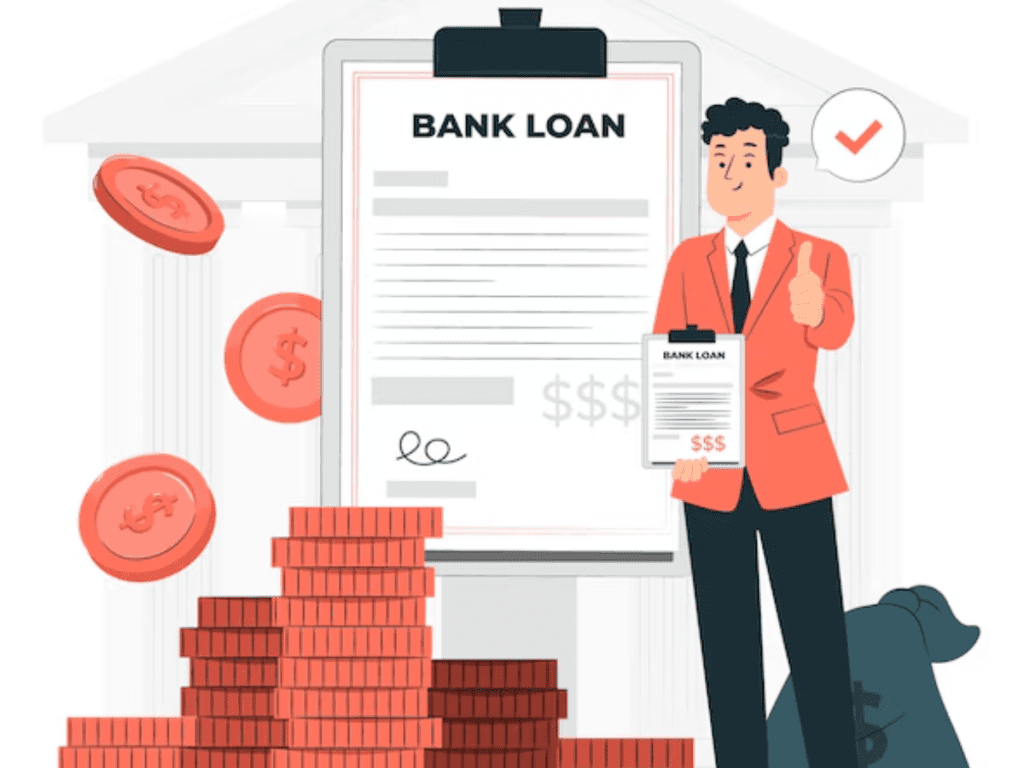Introduction
Loan management is a key part of staying financially stable, and if you are working with credit card debt, a personal loan, a mortgage, or student loans, having a loan repayment plan that functions within your budget is imperative. Repaying a loan may appear intimidating, particularly if you have several loans or have built up a lot of debt. Nevertheless, by creating a considerate and well-planned repayment strategy, you can service your commitments without suffocating your finances. The secret is to create a plan that suits your present income, expenditure, and financial objectives. This article will give you step-by-step instructions and real-world advice on how to create a loan repayment plan that fits your budget, allowing you to maintain control of your finances and make sure your debt gets paid off quickly.
Why a Loan Repayment Plan is Necessary
Having a loan repayment plan isn’t solely about paying regular amounts; it’s about developing a system to enable you to pay back your loans and at the same time keep enough money available. Failing to have a repayment plan in place, you could default on payments, take too long to repay high-interest loans, or miss important financial targets.
Below are a few of the reasons why a loan repayment plan is vital:
- Prevention of Missed Payments: By structuring debts and payment dates, you can prevent missing deadlines. Missing payments may result in late fees, increased interest rates, and adverse effects on your credit score.
- Lessening Financial Stress: A repayment arrangement gives you a clear and achievable path forward, lessening the stress that usually comes with debt. When you exactly know how much you owe and when it is due, you can plan accordingly.
- Establishing Credit: On-time payments and being organized can have a positive effect on your credit score. A good repayment plan allows you to show that you are a responsible borrower, which can be an advantage when applying for loans in the future.
- Debt Payoff Faster: A planned repayment plan allows you to pay off your loans faster by prioritizing the highest-interest loans first, paying less interest in the long run.
Creating a loan repayment plan can be time-consuming, but it is one of the best ways to take back control of your finances and begin moving toward a debt-free future.
Step 1: Determine Your Current Financial Situation
The initial and most critical step towards establishing a loan repayment plan is to evaluate your current finances. This will provide you with a clear understanding of your income, expenditures, and the loans you have taken, which will assist you in making decisions regarding your repayment plan.
1.1 Examine Your Income and Expenses
Begin with the enumeration of all sources of income you are earning, ranging from your paycheck, side hustle, freelance business, or even other sources of cash. Following that, draw up a list of all of your monthly spending. These need to include static costs like your rent, your utilities, your insurance premiums, car loans, and any costs that are dynamic in nature, like groceries, entertainment, and transport.
By keeping track of how much you are spending and making, you will know how much disposable income you have every month to put toward debt.
1.2 Create A List Of All Your Debts
Secondly, you have to review all the debts that you presently carry. These will include any car loans, personal loans, student loans, mortgages, credit card debt, or any other loans that you carry. For each debt, take the following details:
- The amount you owe in total.
- The interest charged on the loan.
- The monthly payment minimum.
- When each payment is due.
Having this data available will assist you in determining which loans to pay back first and will enable you to make informed decisions regarding how to handle your loan repayments.
1.3 Compute Your Debt-to-Income Ratio
Your debt-to-income (DTI) ratio is a critical factor lenders will use to gauge your capacity to accept more debt. It is calculated by your gross monthly income divided by the amount of monthly debt payments you make. A high DTI ratio can imply that you may be too tight financially, while a lower DTI ratio indicates that you might have some flexibility to accommodate loan payments.
Knowing your DTI ratio keeps you aware of where you currently are financially, which is especially important in determining a realistic payoff plan.
Step 2: Prioritize Your Loans
After you have evaluated your financial status, then it is time to prioritize your loans. Not all loans are equal, and some are charged with a higher interest rate or have stricter repayment terms. Prioritizing your loans will help you save on interest as well as pay off your debts quickly.
2.1 Prioritize High-Interest Debt First
The best method to lower the overall cost of borrowing is to pay off high-interest loans first. Credit card debt, payday loans, or personal loans with extremely high interest rates can be very costly in the long run, so it’s wise to attack these first. The quicker you pay off high-interest loans, the lower your interest payments will be, which ultimately saves you money.
The “debt avalanche” approach prioritizes paying off the loan with the highest interest rate first, making minimum payments on other loans. Once you’ve paid off the highest-interest loan, you can proceed to the next-highest-rate loan. This strategy helps you pay off the amount you owe more quickly and inexpensively.
2.2 Apply the Debt Snowball Method
If you enjoy seeing faster results to keep yourself motivated, the “debt snowball” approach might be more suitable. This involves paying off your smallest loan first, no matter what interest rate is. By paying off the smallest debt, you will feel a sense of achievement and motivation to pursue your plan of repayment.
Once you’ve paid off the smallest loan, go to the next smallest loan, and continue in this fashion. Although this approach won’t save you as much in interest, it can be helpful to create momentum and provide a perception of accomplishment.
2.3 Look at Consolidation or Refinancing
If you have several loans with high interest rates, you may want to consolidate them into a single loan or refinance at a lower interest rate. Consolidating debt can roll several loans into one, usually with a lower interest rate, which makes it easier to pay back and less interest over the long term.
Refinancing can be done on loans such as student loans or mortgages, especially if your credit score has become better. You can get favorable terms and lower monthly payments through refinancing and thus pay your debt more conveniently.
Step 3: Create a Monthly Budget
Once you’ve prioritized your loans, the second step is establishing a monthly budget. A budget will help you invest the amount you need to pay off your debt while keeping your living expenses and any savings targets intact.
3.1 Determine Your Monthly Loan Payment Amount
Now that you have your income and expenses, you can figure out how much you are able to afford to dedicate to loan payments each month. Pay above the minimum payment on high-interest loans, and at least the minimum payment on all others. If you have some extra disposable income, think about dedicating it to paying off your loans more quickly.
If you have a variable income, like in gig or freelance work, attempt to set aside some of the money every month toward debt repayment. A budget revision every month, as per changing incomes, might be useful so that you’re constantly in touch with the amount of money you can afford to pay off the loan.
3.2 Monitor Your Expenses
Create a detailed budget that tracks your income and expenses, and adjust as necessary. Many apps and tools are available to help track spending and monitor progress toward your financial goals. Regularly tracking your spending ensures you’re not overspending in non-essential areas, and it helps you stick to your repayment plan.
If you discover that you are spending too much in some areas, determine where you can reduce. For instance, cut discretionary spending, like eating out or entertainment, or save on utilities or transportation.
3.3 Save First
Although it’s important to prioritize paying off debt, you should also save for emergencies first.
Life is full of surprises, and having an emergency fund can save you from sinking into debt if an unexpected cost arises. You can try to keep aside a little of your budget for an emergency fund even if it is only a couple of hundred dollars initially. This will provide you with the comfort of knowing that you can deal with emergencies without taking the help of credit cards or loans. ### Step 4: Establish Realistic Loan Repayment Objectives
Establishing concise, yet achievable, loan repayment objectives is the best way to remain motivated and on track. Divide your debt elimination into small milestones so you can monitor progress and enjoy each triumph.
4.1 Divide Your Loan Payoff Timeline
When determining repayment objectives, it is useful to divide your loan payoff period. Determine short-term and long-term objectives. For instance, you can repay a short loan in three months, and a longer loan in one or two years. Plan a schedule of when you desire to be debt-free based on your financial situation and income.
Be realistic about your goals. If your income is less than anticipated or your expenses rise, you might have to scale back your timeline. The aim is to steadily advance toward debt elimination without stretching yourself too thin.
4.2 Modify Goals When Necessary
Life is uncertain, and sudden expenses or income fluctuations can throw off your repayment plan. If you face financial setbacks, don’t get discouraged. Realign your goals accordingly to suit your present financial status. The point is to continue making progress, even if it is slower.
4.3 Celebrate Milestones
As you mark milestones in your repayment process, be sure to celebrate your progress. It might be paying off a small loan, or reaching a milestone point on your repayment schedule, but acknowledging your progress can help keep you going. Treat yourself to a reward, such as a dining experience or a day of leisure, for remaining committed to your plan.
Step 5: Monitor Your Progress and Reassess Frequently
Finally, it’s important to regularly track your progress and adjust your repayment plan as necessary. Life circumstances change, and your financial situation may evolve. Therefore, it’s essential to reevaluate your repayment strategy every few months to ensure you’re staying on track.
5.1 Monitor Your Debt
Keep an eye on your loan balances and interest rates, and make sure you’re making progress toward paying off your loans. Use tools like debt trackers or spreadsheets to monitor your balances and interest rates, and to see how much you’ve paid off.
5.2 Reassess Your Budget
While your loans reduce, your excess cash flow can grow. Utilize this by revisiting your budget. You could use any additional money to pay off loans more quickly, or simply put the excess in savings.
5.3 Refinance if Needed
If your finances improve, you might want to refinance loans to obtain more favorable terms. This can reduce your payments each month, lower your interest charges, and allow you to get out of debt quicker.

